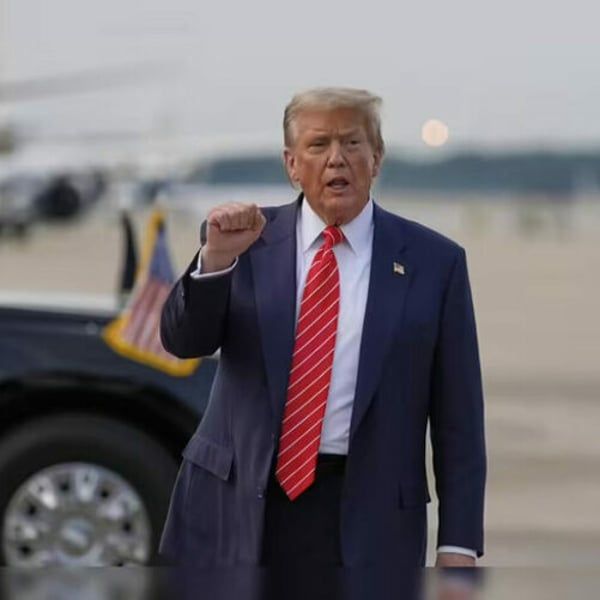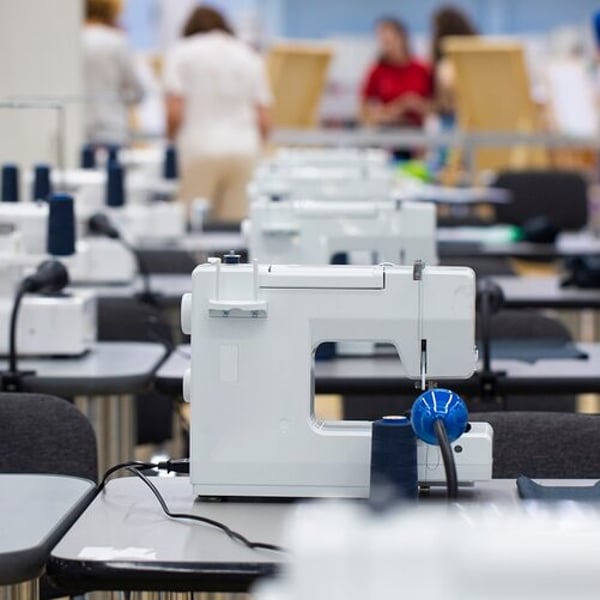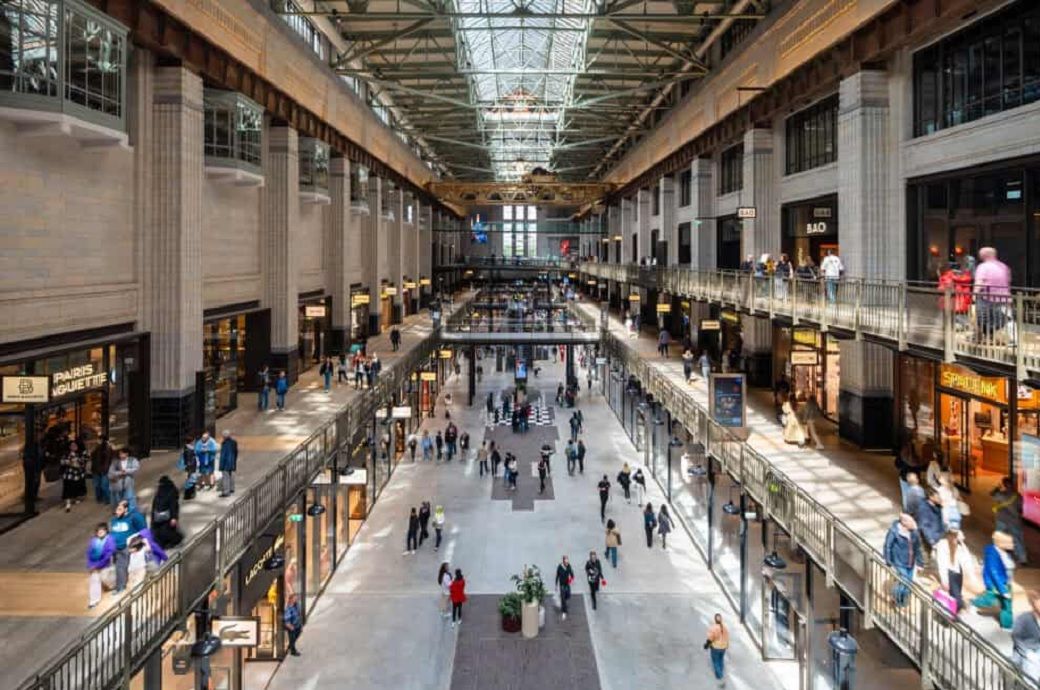By
Bloomberg
Published
July 4, 2025
The two -level commercial agreement of President Donald Trump with the objectives of Vietnam directly in the practices that China has used for a long time to avoid US tariffs: the generalized legal change in production to the factories of Southeast Asia and the “most rough and illegal and illegal origin of exports through its ports.
The agreement slapped a 20% tariff on Vietnamese exports to the US and a 40% tax on the goods that are considered transmitted by the country. With the still scarce details, economists said a lot will depend on the framework that Washington establishes to determine what he sees as “done in Vietnam” and what he sees as transfordations.
To complicate things is the fact that Chinese companies have rushed to establish a store throughout Southeast Asia since Trump launched its first commercial war in 2018. Most Vietnam's exports to the United States are products such as AirPods, telephones or other products gathered with Chinese components in a factory in Vietnam and then sent to the United States. That is not illegal.
“A lot will depend on how 40%tariffs apply. If the Trump administration keeps it directed, it should be manageable,” Roland Rajah, the main economist of the Lowy Institute in Sydney, said. “If the approach is too broad and forceful, then it could be quite harmful” for China, Vietnam and for the United States, which will have to pay higher import prices, he said.
The group of experts estimates that 28% of Vietnamese exports to the US were composed of Chinese content in 2022, compared to 9% in 2018.
Pham Luu Hung, chief economist of SSI Securities Corp. in Hanoi, said that a 40% tax on transmitting goods would have a limited impact on Vietnam's economy because they are not of Vietnamese origin in the first place. Redi -directed exports represented only 16.5% of Vietnam's shipments to the US. In 2021, an action that has probably decreased in recent years amid stronger compliance actions by both governments, Hung said.
“An important warning is that the rules of origin remain under negotiation,” Hung said. “In practice, these rules can have a greater impact than rates of rates in themselves.”
Duncan Wrigley, Chinese chief economist of Pantheon Macroeconomics, said he is skeptical. The last agreement will be effective to eliminate Chinese exports through Vietnam to the United States.
“The devil is in the details, but I believe that China's exports will go through other markets to the US.
As Asia officials rushed to negotiate lower rate levels in the United States with their American counterparts this year, Chinese companies have been so fast to increase their exports through alternative channels to avoid punitive taxes in the United States.
Shipments from China to Southeast Asia have reached high records in Indonesia, Malaysia, Thailand and Vietnam this year. And there has been a “significant increase in correlation” with the increase of the region in exports to the US. During the same period, Citigroup Economists said in a recent report.
Much of that is probably due to the change in legitimate production throughout the region. The goods for the US market can be sent from its factories in Southeast Asia, and what they do in their factories in China will be sent to the rest of the world, said Derrick Kam, an economist from Asia by Morgan Stanley.
“If you try to represent that in commercial data, you will look exactly like the change of route, but it is not,” Kam said. “It is essentially the supply chain that is resolved.”
But his transhipment has been a great concern for Trump's main commercial advisors, including Peter Navarro, who described Vietnam as “essentially a colony of communist China” during an April interview with Fox News.
And not only has been happening in Vietnam.
Not long after Trump announced his “Liberation Day” tariffs on April 2, clothing manufacturers in Indonesia began receiving offers from Chinese companies to be “members in the transhipment,” said Redma Gita Wirawasta, president of the Association of Thread Producers and Fiber of Indonesian filaments.
Chinese products would be redirected to Indonesia, will undergo minimum processing such as repairing or relieving, then ensuring a certification that were made in the country of Southeast Asia, said Wirawasta.
When the goods are exported to the US, they would be subject to the universal gravation of 10%that Trump has imposed on almost all countries, instead of the rate for China that still equals an effective level of more than 50%, even after a recent “agreement” that reduced the taxes of a 145%peak.
With the great scope of arbitration, together with the small surveillance, that process will be difficult to eliminate.
“Chinese exporters and their affiliates and partners in Southeast Asia are highly qualified to adapt to the changing rules, identify the lagoons and, sometimes, exaggerating the scope of the value added by the countries that are not from China,” said Gabriel Wildau, managing director of the Teno Holdings LL advice firm in New York.
Some final or transhipment assembly can change the Rivals of Southeast Asian rival centers such as Cambodia, Thailand and Singapore, or further to Türkiye, Hungary or Poland, Wildou said.
“Another possibility is that the definitions and application mechanisms are confused, which makes the last agreement cosmetic and without teeth,” he said. “The rigorous application would also require a significant impulse of resources to allow the customs of the United States to verify compliance with the most strict rules of origin.”
There have been efforts throughout the region so that at least you can make an effort to stop the practice. In fact, Vietnam has made a big problem by taking energetic measures against commercial fraud and illegal activity in recent months.
In April, South Korea said it seized more than $ 20 million on products with falsified origin labels, most of which were destined for the United States. The Airfreight Reviews Association of Malaysia issued a warning in May, since Chinese corridors promoted the illegal network reduction services on social networks.
Malaysia has centralized the issuance of certificates of origin with its Ministry of Investment, Commerce and Industry, while taking advantage of its customs agency to help stop the transford. Thailand has expanded its surveillance list for high -risk products, including solar panels, cars and parts, and is reflecting on more strict sanctions for offenders.
Casey Barnett, president of the US Chamber of Commerce in Cambodia, is already seeing changes in action. A factory that exports to the main American retailers, including Walmart, Home Depot and Lowe's, said customs officials were very carefully reviewing their products before being sent to the United States, he said.
“He is creating additional paperwork and a bit of bureaucracy here,” said Barnett.
A senior manager of a logistics company in Cambodia, who asked not to be identified because the matter is sensitive, said that export processing time has now extended up to 14 business days, twice what it was before.
But in Indonesia, obtaining a certificate of origin is quite fast and painless when the goods are marked for export, often only require a list of products and a letter to the provincial trade office, according to Wirawasta. The authorities prioritize the control products that enter the country to ensure that they pay the right duties and comply with the regulations, he explained. It is rare for the factory to inspect where an export good was supposedly done.
So much that sometimes, Chinese companies do not even need to gather some local processing. “The shirt could be finished in China, with a 'Made in Indonesia' already sewn,” said Wirawasta.
“Some merchants will not even bother to download the products of the shipping container,” he added. “Download Cuesta Money”.












